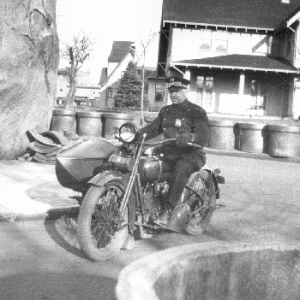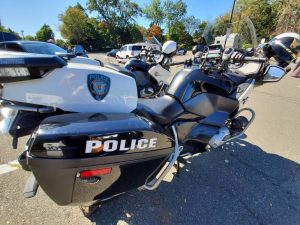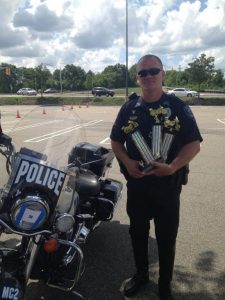Traffic Safety
If you have any questions regarding traffic related issues
Contact: Sgt. Scott McGovern at (201) 670-3946 Ext. 1 or E-Mail via Traffic Division.
The Division of Highway Traffic Safety in conjunction with the New Jersey State Police and the Glen Rock Police would like to remind everyone of the “Move Over Law” which provides safety for All Emergency Workers: Police, Fire EMS, Tow Trucks and Road Construction Crews.

Child Safety Seat Technician Program
The following recommendations will provide the safest way to transport your child according to the American Academy of Pediatrics and the National Highway Traffic Safety Administration (NHTSA). Additionally, it will ensure compliance to the New Jersey Child Passenger Restraint Law. (Title 39:3-76.2a)
Any child under the age of 8 years old and a height of 57 inches shall be secured as follows in the rear seat of a motor vehicle:
a) A child under the age of 2 years and 30 pounds shall be secured in a rear-facing seat equipped with a 5-point harness.
b) A child under the age of 4 years and 40 pounds shall be secured as described in (a) until they reach the upper limits of the rear-facing seat, then in a forward-facing child restraint equipped with a 5-point harness.
c) A child under the age of 8 and a height of 57 inches shall be secured as described in (a) or (b) until they reach the upper limits of the rear-facing or forward-facing seat, then in a belt positioning booster seat.
d) A child over 8 years of age or 57 inches in height must be properly secured by a seat belt.
If there are no rear seats, the child shall be secured as described above in the front seat except that no child shall be secured in a rear-facing seat in the front seat of any vehicle that is equipped with an active passenger-side airbag. The aforementioned is acceptable if the airbag is de-activated.
When it comes to the wellbeing of a child, nothing should be left to chance, especially in a motor vehicle. A large percentage of child safety seats are incorrectly installed, leading to thousands of preventable injuries each year. The best seat for a child is one that fits the child and fits the car and one that the child rides in each and every time.
The purpose of the Child Safety Seat Technician Program is to help reduce the incidence of improper installation of child safety seats. The Glen Rock Police Department has 3 trained and qualified Child Safety Seat Technicians that can inspect and/or install child car seats and to show parents how to safely install the seats themselves. The child safety seat inspection is a free service provided by the Glen Rock Police Department and is conducted at the police station.
Residents may call (201) 670-3946 Ext. 3 to schedule an appointment for this educational contact. Appointments are made according to the officer's schedules.
SEAT BELT LAW CHANGE
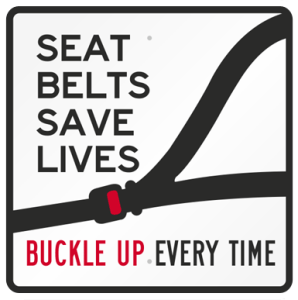 In January 2010, New Jersey’s seat belt law was upgraded. It is now required by law that all people in an automobile are required to wear their seatbelts. While a car may be stopped for the front seat driver and passengers not wearing their seatbelts as a “primary offense”, the rear seat passengers are considered a “secondary offense” and must be stopped for something other than the rear seat passengers not wearing their seat belts.
In January 2010, New Jersey’s seat belt law was upgraded. It is now required by law that all people in an automobile are required to wear their seatbelts. While a car may be stopped for the front seat driver and passengers not wearing their seatbelts as a “primary offense”, the rear seat passengers are considered a “secondary offense” and must be stopped for something other than the rear seat passengers not wearing their seat belts.
New Jersey’s new rear seat belt law: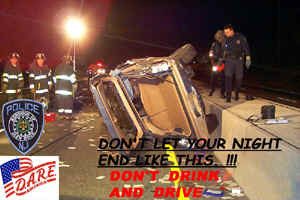
- DOES NOT increase the existing fine for not wearing a seat belt;
- DOES NOT add points to a driver’s motor vehicle record;
- DOES NOT create a new surcharge or additional payment fees
New Jersey’s new seat belt law:
- applies to all passenger vehicles that are required to be equipped with seat belts
- applies to drivers, front and rear seat passengers
- continues the existing requirement that the driver is responsible for seat belt use by front and rear seat passengers who are under the age of 18
New Jersey’s existing child passenger law:
New Jersey ’s child passenger safety law allows Officers to stop and issue a summons to a motorist solely for not securing children as legally required. These are the guidelines for the child passenger safety law that will keep you in compliance with the law.
- Infants up to 20 pounds and one year of age must be secured in the back seat of a motor vehicle in a federally approved rear-facing infant or convertible car seat. (Many newer convertible seats are approved for rear-facing use up to 30-35 pounds). If the motor vehicle doesn’t have a back seat, the infant must be secured in the front seat of the vehicle in the same rear-facing manner. A rear-facing car seat, however, should NEVER be installed in the front seat of a motor vehicle equipped with an active airbag. Prior to installing a rear-facing car seat, the air bag must be switched to off (if the vehicle is equipped with an on/off switch) or permission to deactivate the airbag must be obtained from the National Highway Traffic Safety Administration. Additionally, the front seat should be pushed back as far as possible.
- Children between 20 and 40 pounds (applies to most children between one and four years of age) must be secured in the back seat of a motor vehicle in a federally approved convertible car seat or a booster seat (with a five point harness system). The child must be facing forward in an upright position. If there is no back seat in the motor vehicle, the child must be secured in the front seat of the vehicle in the same forward facing manner, with the vehicles seat pushed back as far as possible.
- Children between 40 and 80 pounds (applies to most children between four and eight years of age) must be secured in the back seat of a motor vehicle in a federally approved booster seat using the lap and shoulder belt. If there is no back seat in the motor vehicle, the child must be secured in the front seat in the same manner as the back, with the vehicle’s seat pushed back as far as possible.
- All passengers under 18 years of age (but older that 8 years of age or weighing more than 80 pounds) are required to wear a seat belt when riding anywhere in a motor vehicle. Children under 12 should ride in the back seat of a motor vehicle – the safest place – when possible.
CHILD PASSENGER SAFETY
Despite widespread efforts to educate drivers about the importance of properly restraining children in vehicles, auto accidents continue to be a leading cause of death among young people. Almost six out of ten children killed in collisions are unrestrained, indicating that a large number of these deaths could be are prevented. In New Jersey, as well as many other states, it is illegal for children to ride unrestrained, yet in four out of ten cases, drivers don’t properly restrain their young passengers. Glen Rock police officers are extremely concerned about this problem and are quite vigilant in stopping and issuing summonses to drivers who violate this provision of the motor vehicle laws.
SAFETY POINTS
- Children 12 and under should ride properly restrained in a rear seat.
- Infants should NEVER ride in the front seat of a vehicle with a passenger side air bag.
- Small children should ride in a rear seat in child safety seats approved for their age and size.
- Check your vehicle owner’s manual and the instructions provided with your child safety seat for correct use information.
- Everyone should buckle both lap and shoulder belts where available.



